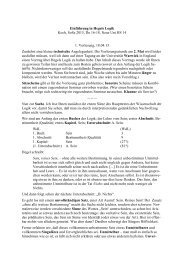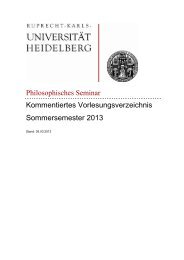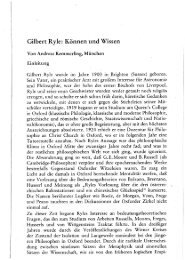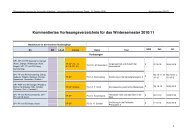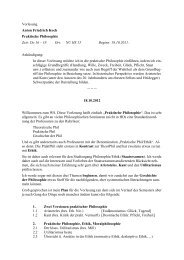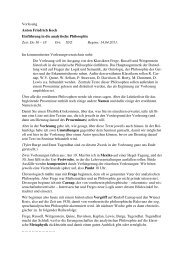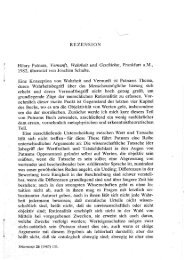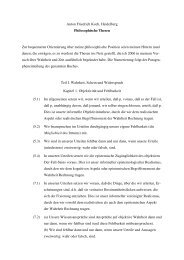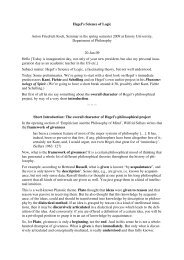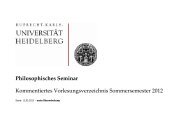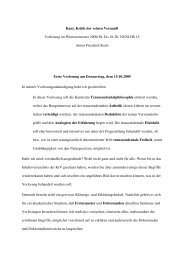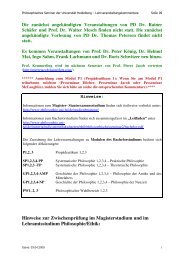KANT'S CRITIQUE OF TELEOLOGY IN BIOLOGICAL EXPLANATION
KANT'S CRITIQUE OF TELEOLOGY IN BIOLOGICAL EXPLANATION
KANT'S CRITIQUE OF TELEOLOGY IN BIOLOGICAL EXPLANATION
Create successful ePaper yourself
Turn your PDF publications into a flip-book with our unique Google optimized e-Paper software.
18 Theory of the Organism<br />
common species membership became more and more important,<br />
this marginal phenomenon which revealed a weakness in the<br />
preformation theory was ever more made the focus of attention.<br />
3) A third reason for growing dissatisfaction with the preformation<br />
theory lay in the fact that it was hardly to be reconciled with<br />
atomism without unscientific ad-hoc hypotheses. Atomism posited a<br />
limit in principle to the divisibility of matter: at some level we come<br />
upon ultimate indivisible particles. The preformation theory presupposed<br />
that matter could in principle be divided and structured in<br />
infinitum. The two views were compatible only if it was assumed<br />
that only a certain number of generations are encased — for<br />
instance, because the world was only 6000 years old and would only<br />
survive for another few thousand. And even in such a case the<br />
divisibility of matter necessary for encasement is out of all proportion<br />
to the divisibility necessary for an atomistic physics. As philosophical<br />
atomism became more and more prevalent in physics and<br />
social philosophy, the theory of preformation became ever more<br />
problematical.<br />
4) The fourth and perhaps most important reason is directly<br />
connected to the discovery of the regenerative capabilities of the<br />
polyp. If this small animal is cut in two, the head grows a new tail<br />
and the tail a new head. The polyp can "reproduce" (as regeneration<br />
was called at the time) any part that it loses, as if the parts depended<br />
on the whole and not the whole on the parts. Mechanism assumed<br />
that the motions of a clock depended on the properties and disposition<br />
of the parts. If a gear is missing the machine stops working. It<br />
is not to be expected that the loss of a part enables the machine to<br />
perform acts (e.g. replacing the part) that an undamaged machine<br />
does not perform. This striking and much discussed phenomenon<br />
would however have remained an amusing and interesting<br />
anomaly at the margins of science, had not a general concept of the<br />
reproduction of an organic system been developed. If life is<br />
conceived as a continual process of re-producing the initial<br />
conditions of individual and species so that the life of an organic<br />
system consists in its self-reproduction through nourishment,<br />
exchange and replacement of its parts, then the regenerative<br />
capacity of the polyp is no longer merely an anomaly; it is a<br />
paradigmatic example of the basic phenomenon of life itself. It was<br />
only in connection with such a theory of reproduction that the<br />
rediscovery of the fresh water hydra (Leeuwenhoek had already



